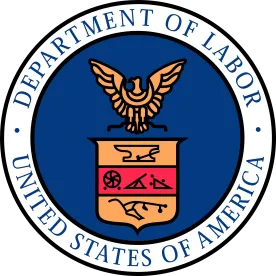One of our clients’ most common questions is: “Do we really need to mail or hand-deliver this summary plan description (“SPD”)/investment information/other plan-related document to our participants? Can’t we just email it to them or put it on our website?” Our answer to this question is usually that time-tested, lawyerly gem: “It depends.”
|
The 2002 Safe Harbor General Requirements. The 2002 Safe Harbor is only available to plan sponsors meeting certain general requirements regarding the provision of electronically-delivered documents. Application. If the general requirements are satisfied, the 2002 Safe Harbor permits electronic delivery to two types of Required Recipients:
|
In late October, the Department of Labor (“DOL”) published proposed electronic disclosure regulations (the “Proposed Rules”). If finalized, the Proposed Rules will offer plan sponsors additional options for electronically providing plan-related documents and information to plan participants, beneficiaries, and other specified recipients (collectively, “Required Recipients”). They may also allow us to give our clients a more satisfying answer to their question
Background. Under ERISA, plan sponsors must use delivery methods “reasonably calculated” to ensure Required Recipients actually receive required plan-related documents and information. Regulations issued by the DOL in 2002 provided plan sponsors with an optional, “safe harbor” electronic delivery method (the “2002 Safe Harbor”) they could use to satisfy ERISA’s delivery requirements. For many plan sponsors, however, complying with the 2002 Safe Harbor’s “opt-in” requirements has been an administrative headache they’d prefer to avoid.
The Need for Updated Electronic Disclosure Rules. The opt-in approach of the 2002 Safe Harbor made sense in 2002. At that time, many plan participants still did not have easy access to the internet either at work or at home. Things have changed a lot over the past 17 years, however.
In the preamble to the Proposed Rules, the DOL discussed the impact technological advances such as expanded broadband internet access, the introduction of smart phones, and the widespread use of social networks (e.g., Facebook, Twitter, and Instagram) have had on plan participants – both at home and at work. The DOL acknowledged the effectiveness of electronic disclosure in reaching plan participants, citing both a 2015 study of the online habits of retirement plan participants indicating that 99% had internet access at home or work (with some 88% of the respondents reporting daily use of the internet), and a 2018 study concluding that 93% of households with defined contribution plan participants had access to, and used, the internet.
The Proposed Rules. While the DOL has long considered updating the 2002 Safe Harbor, the Proposed Rules were issued in response to a 2018 White House Executive Order calling on the DOL (in consultation with the Treasury Department) to implement regulations or other guidance making ERISA-required retirement plan disclosures “more understandable and useful for participants and beneficiaries, while reducing the costs and burdens they impose on employers and other plan fiduciaries responsible for their production and distribution.” By revamping the outdated technological requirements of the 2002 Safe Harbor, the Proposed Rules represent a step into the 21st century for the DOL.
“Notice and Access” Structure. If finalized, the Proposed Rules would leave the 2002 Safe Harbor in place (and plan sponsors could still use it, as well as other delivery methods), while providing employers with a more flexible “notice and access” safe harbor (the “New Safe Harbor”) for electronically distributing certain plan-related documents. Under the New Safe Harbor, unless they opt out (and receive paper version of such documents), eligible Required Recipients will receive electronic notice (by email or text) that plan-related documents have been posted to a website for their review.
Distribution of Covered Documents to Covered Individuals. The New Safe Harbor applies only to the distribution of “covered documents.” For the time being, this includes any plan document ERISA requires retirement plan administrators to provide to Required Recipients, such as SPDs, pension benefit statements, annual reports, summaries of material modifications (“SMMs”), blackout notices, etc. Plan documents required to be provided upon request do not, however, constitute “covered documents” that can be provided under the New Safe Harbor.
| New Safe Harbor Limited to Retirement Plan Disclosures. Notably, the New Safe Harbor does not apply to welfare benefit plan disclosures. While indicating that it did not interpret the Executive Order as limiting its ability to take action with respect to such disclosures, the DOL acknowledged that electronic disclosure of welfare benefit plan documents may raise different policy considerations. The DOL also cited its need to consult with the Treasury Department and the Department of Health and Human Services before making changes, given the three agencies’ shared interpretative jurisdiction over many welfare benefit plan disclosures. |
Under the New Safe Harbor, a plan sponsor may electronically distribute covered documents to “covered individuals” who provide the plan sponsor (or their employer or an authorized third-party administrator) with an email address or smartphone number, whether as a condition of employment, upon becoming a plan participant, or otherwise. If an employer assigns an email address (or issues a company-provided smartphone and data plan) to an employee, the employee will be viewed as voluntarily providing that email address or phone number and treated as a covered individual.
Employers that don’t issue email addresses or smartphones to new employees and don’t request email addresses or phone numbers from new hires should consider doing so, as this will facilitate their ability to use the New Safe Harbor. Employers should also consider asking terminating or retiring employees for email addresses or phone numbers that can be used to electronically provide plan-related documents, as that will ensure such employees remain covered individuals who can electronically receive covered documents.
Initial Notification. Before electronically distributing plan-related documents to covered individuals, a plan sponsor must notify them, on paper, that it is adopting a new method of electronic delivery. The initial notice must inform covered individuals that:
- they will be receiving future plan-related information electronically, and will be notified by email when covered documents are available for review on the plan sponsor’s (or an authorized provider’s) website; and
- they may request paper copies of certain covered documents or opt out of electronic delivery entirely (and the procedures for doing each).
Any covered individual who will be subject to the New Safe Harbor must receive this notice. Assuming the Proposed Rules are finalized, if a plan sponsors wants to rely on the New Safe Harbor to electronically transmit plan-related documents to some or all of its existing employees, it will need to provide those employees with an initial notice. In addition, plan sponsors must have procedures in place for determining the validity of email addresses and phone numbers provided by covered individuals to ensure they receive the initial (and any other required) notice.
|
The Notice of Internet Availability Must Contain:
Information that might overshadow the notice's importance may not be included. |
Notice of Internet Availability. Generally, plan sponsors must send covered individuals a separate notice of internet availability for each covered document made available to them electronically. However, plan sponsors may send a single combined notice alerting covered individuals to the posting of certain plan documents (SPD, SMMs, summary annual report, etc.).
The notice of internet availability must be provided when a covered document is posted on the website, along with a link to the website, by the date the document must be furnished under ERISA. For example, if ERISA requires a document to be distributed by April 15, the plan sponsor could meet that obligation by sending covered individuals a notice of internet availability on April 15 and ensuring the document is posted to the website on that date. Annual provision of a combined notice will be treated as timely if the notice is provided no more than 14 months after the prior plan year’s notice was provided. (The documents described in the combined notice must, however, be posted on the website by their ERISA due dates.)
According to the DOL, the notice of internet availability should be a “concise, clear disclosure” conveying the importance of its message. The notice should be written in plain language that is easily understandable by an average plan participant. (The DOL suggests using the Flesch Reading Ease test to judge readability.)
Website Posting Standards. The notice of internet availability must link covered individuals to a website either displaying the covered document directly or showing a log-in page through which the document can be accessed. As with the initial notice, the website must be formatted so that it is understandable by the average plan participant.
Covered documents must be displayed on the website in a commonly-available format (such as Word or PDF) that can be read online, printed, downloaded, and/or saved. Covered documents must be electronically searchable for numbers, letters, or words, and must remain available on the website until they are superseded by a later version.
Plan sponsors may work with service providers (such as recordkeepers, investment providers, etc.) that actually host the website on which covered documents are posted. The plan sponsor will, however, still have fiduciary responsibility for selecting such service providers and for monitoring their activities, and will ultimately be responsible for the website’s establishment and maintenance.
Effective Date. The Proposed Rules will become effective 60 days after they are published in the Federal Register, and will apply to employee benefit plans as of the first day of the first calendar year after their effective date. It may be awhile before the Proposed Rules are finalized – the DOL has requested comments on a wide range of topics and will need time to sift through the responses it receives. Comments on the Proposed Rules are due by November 22, 2019.
While Plan sponsors cannot rely on the New Safe Harbor until the Proposed Rules are finalized, the “notice and access” structure adopted by the New Safe Harbor may provide plan sponsors already using a similar method to distribute plan-related documents to Required Recipients with some comfort that the DOL will respect that approach.





 />i
/>i
